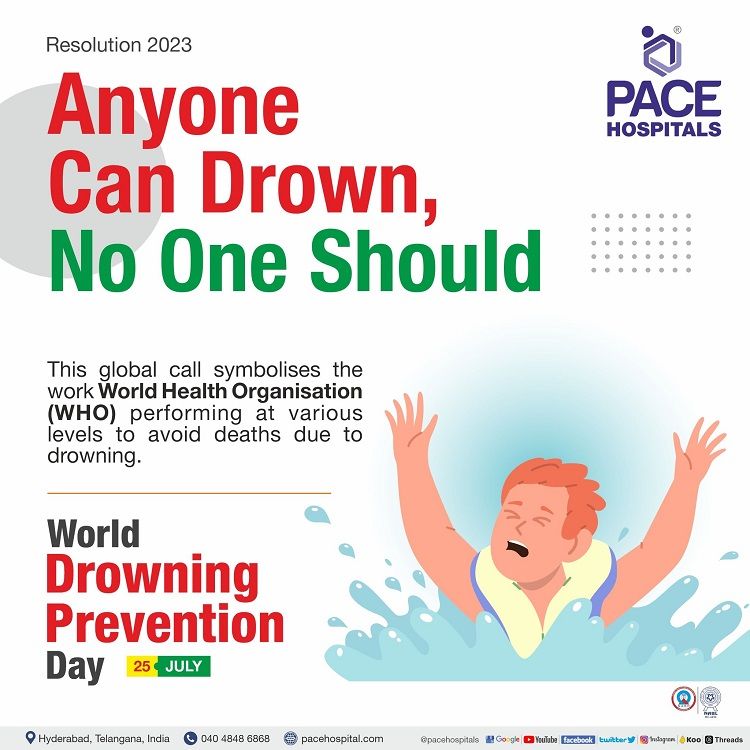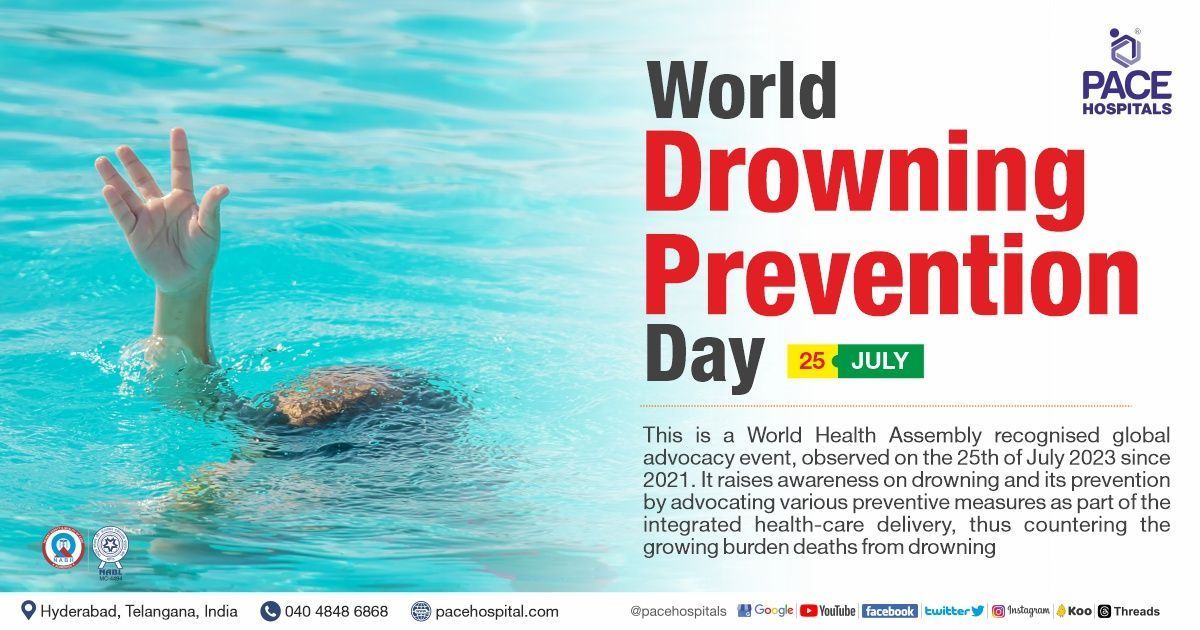World Drowning Prevention Day 25 July 2023 – Importance, Resolution
World Drowning Prevention Day is a global advocacy event which is observed on the 25th of July every year since 2021. The World Health Assembly marked this day as the World Drowning Prevention Day to spread the awareness on drowning and devise various counteractions to restrain it. Various preventive measures as well as emergency responses are also advocated as part of the integrated health-care delivery, thus countering the growing burden of injuries and deaths related to drowning.
World Drowning Prevention Day 2023 Resolution
This year 2023, the World Drowning Prevention Day resolution is "Anyone can drown, no one should". This global call symbolises the work World Health Organisation (WHO) performs at various levels to avoid deaths due to drowning.
At the national level, WHO has collaborated with Ministries of Health in several low- and middle-income countries to prevent drowning through the deployment of obstacles, regulating access to water and the construction of pre-school day care centres.
Furthermore, WHO aided research in low-income countries are currently investigating the priority issues of drowning prevention. WHO provides regional training programmes and workshops to bring representatives together from governments, non-governmental organisations (NGO), and United Nations organisations working on drowning prevention.

Importance of World Drowning Prevention Day
Despite drowning being a mishap, which can be completely preventable just with a few scalable and low-cost interventions, at least 2,35,000 people are drowning annually worldwide. Just within the last 10 years, drowning has been the cause of over 25 lakh preventable deaths, but its impact has been largely unrecognised.
The recognition of the association between development and drowning depicted that over 90% of the deaths seemingly occur in low- and middle-income countries, with Africa holding the world’s largest drowning rates and Asia carrying the highest drowning burden deaths by number.
Many countries reported that drowning is the leading cause of childhood mortality in their archives, with drowning being listed among the 10 leading causes of death for 5-14-year-olds. All these deaths are preventable with just requiring preventive measures and awareness about the same.
These above instances could paint a picture about the necessity of a dedicated day to remind the public about drowning, its preventable deaths and commemorating the same worldwide.
History of World Drowning Prevention Day
As acknowledged by the Director of the Department of Social Determinants of Health, World Health Organisation (WHO), Dr Etienne Krug identifies that drowning has the greatest singular impact among the world’s poorest people. Along with the rising poverty following the COVID-19 pandemic, inequalities in drowning risk are also exacerbated.
Understanding the increasing need of curbing deaths due to drowning, the WHO brough out the first ever resolution in 2021 and the counteractions for the prevention of drowning in the 76th World Health Assembly by joining hands with various governments and their partners.
Thus, in accordance with the United Nations General Assembly Resolution 75/273 (2021), the WHO oversaw the preparations for World Drowning Prevention Day, which will be observed annually on the 25th of July since 2021. This global advocacy event aims to memorialise the lives lost to drowning and raise awareness about water safety.
Risk factors for drowning
The WHO published a global report on drowning. Inadequacy of barriers which control the public’s exposure to water bodies is one of the main risk factors of drowning. The others include:
- Inadequate supervision in close quarters especially for infants and young children.
- Lack of estimation or low estimation of water danger awareness.
- Engaging water bodies with high-risk behaviour such as
- consuming alcohol
- swimming alone etc.
- Utilising water transport and water crossings.
- Flood disasters whether from extreme rainfall, storm surges, tsunamis, or cyclones.
- Poor swimming skills is one of the obvious risk factor.
Ten actions to prevent drowning
There are various preventative actions and legislations which have shown to be successful in reducing the drowning burden in few high-income countries. Several of these strategies used have been successfully adapted in low- and middle-income countries, demonstrating their efficacy. Ten of those have been codified and simplified below:
- Installation of barriers controlling access to water.
- Establishment of safe places away from water for pre-school children, with capable childcare.
- Incorporation of basic swimming, water safety and safe rescue skills to school-age children.
- Provision of safe rescue and resuscitation classes, even for bystanders.
- Increasing public awareness of drowning and highlighting the vulnerability of children.
- Establishment of safe boating, shipping, ferry regulations and their strict enforcement.
- Effective management of flood risks and other hazards to build resilience internationally.
- Integration of drowning prevention practices among local population living near water bodies.
- Development of a national water safety plan in coordination with United Nations and WHO.
- Provision of financial aid for well-designed studies to address priority research questions.
Share on
Request an appointment
Fill in the appointment form or call us instantly to book a confirmed appointment with our super specialist at 04048486868











